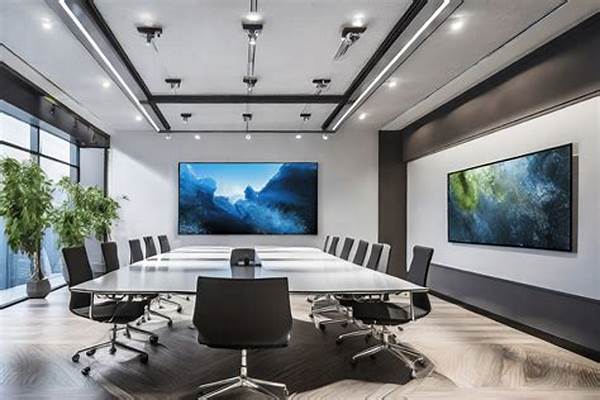In the world of home entertainment and professional presentations, bigger often means better. Imagine hosting a movie night, a business presentation, or a gaming tournament with a jumbo 200-inch audio visual projector screen. It’s not just about size; it’s about delivering an immersive experience that keeps audiences on the edge of their seats. With the right screen, your content becomes larger than life, creating memories that linger long after the credits roll.
Read More : Promotional Video Production Services For Companies
Selecting the perfect 200-inch projector screen involves more than just measuring your wall space. It’s an art and science combined—a balance between technical specifications and personal preferences. From resolving pixel-perfect details to ensuring the best color reproduction, each feature plays a critical role. If you’ve ever been overwhelmed by jargon like gain, aspect ratio, or ambient light rejection, don’t worry. This article breaks it all down into simple, actionable tips for choosing a jumbo 200-inch audio visual projector screen.
Understanding Screen Material and Gain
When shopping for a 200-inch projector screen, the screen material is pivotal. Different materials impact picture quality, brightness, and viewing angles. Consider this: high gain materials, often made from reflective surfaces, increase screen brightness, ideal for rooms with ambient light. For instance, a gain of 1.0 is equivalent to the light reflecting back perfectly, meaning no light is lost. However, choose wisely. As enticing as high gain sounds, it can hotspot or wash out colors if misapplied.
Another aspect to ponder is screen fabric—the texture matters too. Smooth surfaces are perfect for ultra-HD content, ensuring every detail pops. Meanwhile, acoustically transparent screens allow sound to pass through, perfect for home theaters with surround sound speakers placed behind the screen. This feature can elevate your audio visual experiences, marrying sight and sound seamlessly.
The Importance of Aspect Ratio
Aspect ratio is another crucial element. This term might seem complex, but it’s nothing more than the screen’s width to height ratio. The cinema-standard for movies is 16:9, while some films and presentations may prefer a more cinematic 2.35:1. It’s like tailoring your suit to fit perfectly—the wrong ratio can lead to cut-off edges or black bars that disrupt the immersive experience.
Before committing, consider your primary content type. If you’re a film buff, a 2.35:1 screen might serve you best, while a sports enthusiast or gamer might benefit from the versatility of a 16:9 ratio.
Tackling Ambient Light Issues
Screen brightness is often overshadowed by its nemesis: ambient light. Even a bright screen is at a disadvantage in a well-lit room. Ambient light rejection (ALR) screens are designed to counter this issue, reflecting projector light while minimizing room light interference. These screens feature special optical layers designed to selectively reflect light. It’s a bit like having sunglasses for your screen—protective and enhancing.
However, consider your environment. If you have complete control over lighting, a standard white or grey screen might suffice. But if you’re in a setting where pesky daylight streams in, investing in an ALR screen may just be your best bet for uncompromised viewing.
Practical Considerations for Space and Setup
When it comes to a 200-inch screen, thoughts of grandeur come with practical considerations. Ask yourself: Do you have a wall large enough? Does your projector have sufficient throw distance—a.k.a. the distance required between the projector and screen to fill it entirely? It’s not just about looking at your room and guessing; meticulous measurements are crucial.
Then, ponder the screen’s housing—fixed-frame or retractable? Fixed frames offer a cinema-like aesthetic, beautifully taut with zero wrinkles, perfect for a dedicated theater. On the other hand, retractable screens save space and can be cleverly tucked away when not in use, often operated by motorized systems for modern convenience.
Read More : How To Maintain A Projector To Keep It Clear And Durable
Cost vs. Quality: Finding the Perfect Balance
Now, to the ever-pressing question: How much to spend? The market offers a spectrum—from budget-friendly models to high-end options that promise the world and more. But price doesn’t always equate to quality. A pricey screen may include features irrelevant to your needs, while a lower-cost model might tick all your boxes.
Rational purchasing involves assessing priorities, perhaps investing more in material quality or acoustic transparency rather than fancy housing. Remember, the most expensive option isn’t necessarily the best fit for you. Seek testimonials, read reviews, compare, and contrast. Every shopper’s journey is unique, and a well-researched purchase could forever transform your viewing adventures into unforgettable odysseys.
Detailed Guide to Choosing the Right Projector Screen
To make an informed decision, you need more than just lumbar support—a strategic, detailed evaluation process is essential. Here are some core considerations:
Key Takeaways from Testimonials and Professional Reviews
Here’s where customer opinions and expert insights especially shine. They shed light on real-world usage, helping potential buyers bypass pitfalls others experienced. Common praises revolve around:
While concerns often highlight setup challenges—hence the importance of careful pre-installation planning. A rich tapestry of professional reviews weaves technical understanding with practical advice, bridging emotional excitement with rational thought.
Conclusion
Choosing the right jumbo 200-inch projector screen is more than just a purchase—it’s a commitment to quality home entertainment or professional execution. The appropriate choice can transform a room into a gateway of endless vibes, from adrenaline-pumping sports to tear-jerking dramas. Measuring your room, understanding your light settings, wisely balancing your budget, and zeroing in on material features all play vital roles.
With this knowledge, you’re well-equipped to embark on this buying journey. May your next cinematic experience be not just about watching but living—and let the adventures you embark upon with your 200-inch screen be as limitless as the cosmos.
